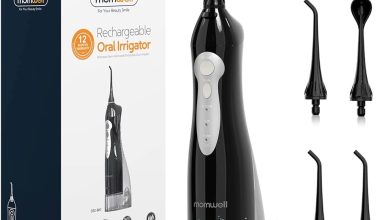When was Dental Floss Introduced: Unveiling the Revolutionary Oral Care Tool

Dental floss was introduced in the late 1800s, providing a tool for better oral hygiene. Dental floss is a thin thread used to remove plaque and food particles from between the teeth and along the gumline, helping to prevent dental issues like cavities and gum disease.
This invention revolutionized oral care by allowing individuals to clean hard-to-reach areas of their mouth that a toothbrush couldn’t access alone. With its effectiveness and ease of use, dental floss quickly gained popularity and became an essential part of dental hygiene routines worldwide.
Regular flossing, along with brushing and regular dental check-ups, is vital for maintaining healthy teeth and gums.
The History Of Dental Floss
The history of dental floss can be traced back to ancient civilizations where various methods of oral hygiene were used. The need for a better oral care tool arose as people recognized the importance of maintaining good dental health. In ancient times, items such as twigs, feathers, and even strands of hair were used to clean between teeth and remove food particles. However, it was not until the early 19th century that the concept of flossing as we know it today began to take shape. In 1815, an American dentist named Levi Spear Parmly introduced the idea of using silk thread as a dental cleaning device. This eventually paved the way for the development of modern dental floss, which is now available in various forms such as waxed and flavored options. As dental hygiene practices continue to evolve, regular flossing remains an essential part of maintaining optimal oral health.
Evolution Of Dental Floss
The history of dental floss dates back to the 19th century, with significant advancements in its materials and manufacturing. During this era, dental floss made from silk started gaining popularity. Silk dental floss was widely used due to its smooth texture and effectiveness in removing plaque and food debris from between teeth.
However, it was in the early 1940s that nylon dental floss was introduced, revolutionizing oral hygiene practices. Nylon floss, a more durable and affordable alternative to silk, quickly replaced it as a popular choice among consumers. Nylon dental floss offered superior strength, flexibility, and resistance to shredding, making it ideal for reaching tight spaces and removing plaque effectively.
Since then, dental floss has continued to evolve, with the introduction of different flavors, wax-coated options, and specialized floss for specific dental needs. Today, dental floss remains a crucial tool in maintaining dental health by preventing gum disease, cavities, and bad breath.
Impact Of Dental Floss On Oral Health
Dental floss was introduced in the early 19th century as a means to improve oral hygiene. Regular flossing has been found to have a significant impact on oral health. It helps remove plaque and food particles that are difficult to reach with a toothbrush, preventing the build-up of bacteria and reducing the risk of gum disease.
Regular flossing has several benefits that contribute to overall oral health. It helps in maintaining healthy gums by reducing inflammation and preventing gingivitis. Flossing also plays a crucial role in preventing periodontal diseases such as gum recession and bone loss.
Studies have shown a positive link between regular flossing and overall oral health. It can help prevent tooth decay by keeping the spaces between teeth clean and reducing the risk of cavities. Flossing also promotes fresh breath by removing trapped food particles that can lead to bad breath.

Credit: issuu.com
Types Of Dental Floss And Their Uses
Traditional waxed dental floss is one of the most common types of dental floss on the market. It is made from nylon fibers that are coated with wax, making it easier to slide between teeth without fraying or breaking. This type of floss is ideal for people with normal-sized gaps between their teeth.
Unwaxed dental floss, on the other hand, is made from nylon fibers but does not have a wax coating. It is thinner and can be more difficult to slide between tight teeth, but it effectively removes plaque and food particles.
Floss picks are a popular alternative to traditional floss. They consist of a small length of floss threaded through a handle, making it easier to reach the back teeth. Floss picks are particularly useful for people with limited dexterity or children.
Interdental brushes are small brushes specifically designed to clean the spaces between teeth. They come in various sizes to fit different gap sizes. Interdental brushes are often recommended for people with braces or dental work.
Methods Of Effective Flossing
Dental floss was introduced in the early 19th century as a way to clean the spaces between teeth. Today, it is recognized as an essential part of maintaining good oral hygiene. Flossing helps remove plaque and food particles from areas that a toothbrush cannot reach, reducing the risk of gum disease and tooth decay.
When it comes to effective flossing, it is important to follow the correct technique. Start by taking approximately 18 inches of floss and wrap it around your middle fingers, leaving a few inches to work with. Gently slide the floss between your teeth, using a back-and-forth motion. Be sure to curve the floss around each tooth in a “C” shape, going beneath the gumline.
There are some common mistakes to avoid while flossing. One is snapping the floss into the gums, which can cause injury. Instead, use a gentle and controlled motion. Another mistake is neglecting to floss regularly. To make flossing a habit, try incorporating it into your daily oral care routine.
To ensure effective flossing, here are some tips to consider. Use a new section of floss for each tooth to avoid transferring bacteria. Be patient and take your time, ensuring that you reach all the teeth. If you find traditional floss difficult to handle, consider using floss picks or water flossers as alternative options.
Dental Floss Innovations And Trends
| When was Dental Floss Introduced |
Dental floss has come a long way since its introduction. Technological advancements have revolutionized oral care tools, including dental floss. Today, eco-friendly dental floss options are gaining popularity due to increased environmental concerns. Companies are now offering floss made from sustainable and biodegradable materials like bamboo and silk, reducing the impact on the planet. These eco-friendly alternatives are providing consumers with an opportunity to make conscious choices for their oral health. As we look towards the future, the dental industry is expected to continue innovating dental floss and oral care tools. The focus is likely to be on creating more efficient flossing options that cater to individual needs. With new research and technology, the future of dental floss holds exciting possibilities.
Frequently Asked Questions On When Was Dental Floss Introduced
When Did Dental Floss Become Widely Used?
Dental floss became widely used in the late 1800s with the invention of waxed floss by Levi Spear Parmly.
What Did People Use Before Dental Floss?
Before dental floss, people used various objects like twigs, feathers, and horsehair to clean between their teeth. They also used toothpicks and cotton thread to remove food particles.
How Did People Floss Before It Was Invented?
People used various natural materials like horsehair, silk threads, or waxed linen to clean between their teeth before dental floss was invented. They would insert these materials between their teeth and move them back and forth to remove food particles and plaque.
Did People Floss In The 1800s?
Yes, people did floss in the 1800s. Although not as common as today, it was practiced using silk threads.
Conclusion
After exploring the fascinating history behind dental floss, it is clear that this essential oral hygiene tool has been around for centuries. From its humble beginnings with silk threads, dental floss has evolved to become an indispensable part of our dental care routine today.
Understanding the origins and advancements of dental floss helps us appreciate the importance of maintaining good oral health through regular flossing. So, next time you reach for your dental floss, remember the long and storied history that led to its creation, and the countless smiles it has helped preserve throughout the years.





